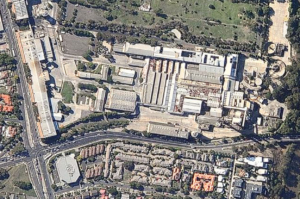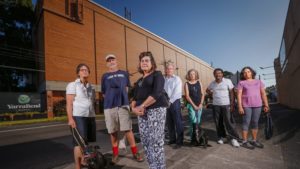APMAG – 10 years representing the community
The Alphington Paper Mill Action Group – APMAG to our friends – was recognised by Yarra Council as one of the great local community groups of Yarra this month. Along with the Collingwood and Abbotsford Residents Association (CARA) – who have been active for 20 years, and the Fitzroy Residents Association – who have been active for 50 years!! – we are proud to be part of the vibrant and super engaged local community scene.
These are all phenomenal achievements are made possible by the commitment of dedicated members, and a deep bench of local people who contribute, support and participate over time.
APMAG’s story – Early, focused, consistent
APMAG itself was born out of SAFCA – the South Alphington and Fairfield Civic Association – another long running community group. SAFCA was established in 1995 and is still active today. It was formed to look at a broad range of issues – such as representation, environment, services and planning.
In 2008, when Amcor announced they wanted to sell the mill site, locals could see this was going to be a big issue and they needed to act early.

It was clear to the community that the site would be redeveloped as urban housing. The local residents lobbied Council to start planning for that outcome so any purchaser of the site knew what they needed to deliver. The basis of that lobbying was that if development was coming the community needed to be engaged with the process or they would not get a say in what was developed.
The decision was made to achieve positive, constructive engagement, to be a considered voice at the table, and build a consistent platforms to achieve the best development result for new and existing residents.
City of Yarra held a large community meeting at Collingwood Town Hall. An AMCOR task force was set up by the City of Yarra to write the Design and Development Guidelines. The APMAG committee and Alphington community played a key part in that Taskforce.
Focus on the Mill site – Connect to the local network
APMAG was formed to focus only on the paper mill site. Other local groups, like SAFCA, are represented on the team. In this way, local groups stay in touch with each other, work stays focused, and everyone doesn’t have to go to every local group meeting! That approach continues today with WARI (West Alphngton Residendts Inc) and AFADA (Alphington Fairfield Appropriate Development Association Inc.) also focusing on target issues, and connecting into the APMAG group.

Consistent message
APMAG did early community consultation to decide what was important to the community that we could realistically impact.
We couldn’t prevent the development from happening, and it wasn’t feasible to impact the residential development itself – that would be driven by the commercial outcome of the developer. So the group established 4 key pillars that still guide us today.
- Riverfront – The riverfront needs to be public, protected, accessible and natural
- Environmentally Sustainable Design – ESD – needs to be a strong requirement in the DPO
- Educational facilities provided for new and existing resident growth
- Community Facilities also provided for new and existing residents needs
This consistency has helped APMAG build a credible, realistic and respected voice in the process.

When did this matter
This mattered for 2 key processes
- In the 2008-9 era, when early design principles were laid down for the IPO (Incorporated Plan Overlay),
- In 2015 when the DPO (Development Plan Overlay) was developed. This was the last significant influence point. After a DPO is laid down, the community has no appeals or consultation process! APMAG had 28 days to submit any input.
There were significant issues with the early proposal and we submitted a 70 page response, prompting a major rewrite and re-submission in Sept 2015 that addressed most of the concerns.
Traffic in general, and the development of the Chandler Highway bridge in particular, was also a huge issue at this time. WARI was formed to focus on the bridge.
In December 2015 the new DPO was approved by council, with 85 conditions.
APMAG continues to work through the council processes, Councillors and committees to represent the community, and make sure the promises made over this time are kept.

The story of this community group has been an interesting case study for VCE geography students studying how our urban landscape ends up the way it does. We occasionally present to these groups – and the story is attached here.
